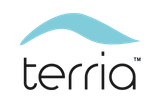Terria Map
This is a django app that is configured to run on Cartoview to display GeoNode maps using TerriaJS library.
It uses the starting project of TerriaJS, TerriaMap which is a catalog-based web geospatial visualisation platform.
Getting Started
The following steps describe how to run this app in Cartoview for development purposes.
-
Clone this repository inside the pre-installed cartoview, apps directory (e.g.
installed-cartoview/apps/) with the name terria_map.git clone https://github.com/cartologic/cartoview_terriaJs.git terria_map
-
Navigate to
static/terria_mapdirectory,- Run
npm installto install the Terria Map dependencies It's recommended to use NodeJS v10.24.1. - Then run
npm run gulpto build a standard version of Terria Map. You can otherwise build a minified release build by runningnpm run gulp release.
- Run
-
Adjust any configuration that should be done for installing a normal Cartoview app for development.
- Add the app details to the
apps.jsonfound incartoview/appsdirectory.
"terria_map": { "active": true, "order": 1, "pending": false }
- Open django admin page (e.g.
/admin) and create an entry for the app with its details in theAppsmodel.
Note: Make sure to use terria_map as name instead of TerriaMap and mark the app as a
Single instance.

- Add the app details to the
-
Restart Cartoview.
Now, you should have the app installed. You can start adding layers and creating maps in GeoNode to be able to show them in the app.
Components
This app consists of the following:
- A landing page that shows all the created maps, built as a single page application using React.
- The Terria Map itself displaying GeoNode maps.
At views.py, you can find all the views that are responsible for delivering the necessary configurations to run the maps. Such as the main catalog that holds the layers for each created map in GeoNode.
You can access the code of Terria Map and make any edits to the UI of the original app. But you have to build it again using the command npm run gulp.
Changes
This app is configured to run in a django environment so to handle static files like the build, there are some changes that are made inside terria_map.
- index.js:
var terriaOptions = {
baseUrl: '/static/terria_map/wwwroot/build/TerriaJS' # Instead of 'build/TerriaJS'
};
module.exports = terria.start({
...
configUrl: '/static/terria_map/wwwroot/config.json' # Instead of 'config.json'
...
});
- buildprocess/webpack.config.js:
module.exports = function(devMode, hot) {
...
var config = {
...
output: {
...
publicPath: hot ? 'http://localhost:3003/build/' : '/static/terria_map/wwwroot/build/' # Instead of 'build/'
...
},
...
}
...
}
- Move wwwroot/index.html to
templatesdirectory, rename it terria.html, and update any static file import.
TerriaMap Localization
If you want to add a translation for a particular language, you may follow this guide of how to add a new language to Terria map.
Limitations
TerriaJS comes with a Node.js-based web server, called terria-server that offers many useful features like serving static files and a proxy service that allows TerriaJS to access geospatial data servers that don't support CORS.
As this app is intended to run in a django environment, terria-server is not available to use in the app yet.
For information about the importance of terria server, please refer to TerriaJS documentation.
